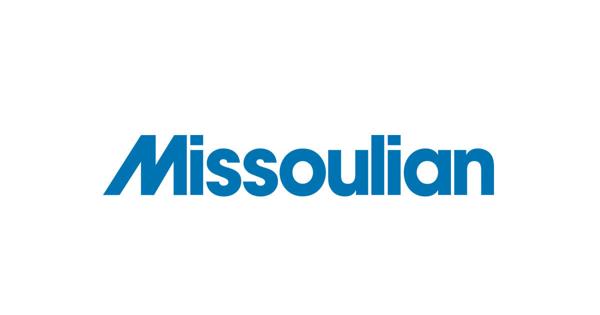You might think electrolytes are some kind of lab-made superfuel for elite athletes and those who want to be like them.
Electrolytes are indeed powerful, and in some circumstances, your body might benefit from a boost. But like comic book heroes with mild-mannered alter egos, they might already be hanging around in your life by another name. And like a movie franchise with one sequel too many, more is not always better.
“The simplest way to think about electrolytes is that they are essential minerals and that they provide many different things that the body needs,” said Dr. Sara Rosenkranz, an associate professor in the department of kinesiology and nutrition sciences at the University of Nevada, Las Vegas.
They’re called electrolytes because they have an electric charge – positive or negative – when dissolved in fluids, such as blood. Those electric charges signal muscles and nerves. Our bodies would not work without electrolytes.
People are also reading…
“They have a number of different, really important and critical functions,” Rosenkranz said, including helping to regulate blood pressure, blood glucose, heart rate and rhythm and the body’s water balance.
You might know these minerals by their everyday names – among them, calcium, magnesium, phosphorus, sodium and potassium.
Although you might think of electrolytes as something that comes in a powder, tablet, droplet or sports beverage, you’ll find plenty in a healthy diet, Rosenkranz said. “For most people, it is absolutely true that we get adequate amounts in the foods and beverages that we consume already,” she said.
For example, calcium – which helps regulate blood clotting, heart rhythm and how blood vessels dilate and contract – can be found in tofu, low-fat dairy products and some plant-based milks. Magnesium, which lets many enzymes function, is usually found in foods that contain fiber, including leafy greens, beans, nuts and whole grains.
Getting enough of some electrolytes, such as potassium – which helps regulate blood pressure – can be challenging, “particularly if you’re not eating a lot of fruits and vegetables,” Rosenkranz said.
Many people have the opposite problem with sodium. Paired with chloride, it’s salt. It’s also added to many processed foods.
Sodium helps restore the body’s fluid balance after prolonged sweating, illness or if someone has taken diuretic medications, said Dr. Mindy L. Millard-Stafford, director of the Exercise Physiology Laboratory at the Georgia Institute of Technology in Atlanta. “Water can do the job also, but without sodium, it tends to be retained less effectively.” Water alone also quenches thirst quickly, while sodium makes a person want to drink more, which can be helpful at times.
But excess sodium also raises blood pressure, and most Americans are already eating too much. Federal dietary guidelines recommend adults eat no more than 2,300 milligrams of sodium a day, or about 1 teaspoon. The ideal daily limit for most adults is 1,500 mg, according to the American Heart Association. Yet Americans consume an average of 3,400 mg a day.
If you’re not eating excess sodium, Rosenkranz said, your body does a pretty good job of keeping electrolytes in balance. The kidneys process them and filter any excess into urine.
Sodium and chloride (which helps regulate fluids) also can be lost through sweat. So at times, our bodies might need a little more. But while Rosenkranz said most adults don’t need to seek out ways to take in extra electrolytes, she said there’s not a one-size-fits-all answer to the question of who needs extra.
Children who have prolonged periods of vomiting or diarrhea due to illness might be given electrolyte drinks. A child’s body has a greater ratio of body surface to overall weight, Rosenkranz said, so they lose fluids through sweat more easily than adults.
People who work long hours outdoors, particularly in hot, dry climates, or athletes doing “prolonged, vigorous-intensity exercise” might also benefit from an electrolyte drink, she said, as might athletes at higher altitudes, where staying hydrated can be a challenge.
Research on electrolyte supplementation is mostly aimed at athletes, she said. Some sources say that water is fine for anyone in an activity that lasts less than an hour; some say even more activity is needed before anything beyond water is helpful.
Rosenkranz agrees with a general principle that if your exercise lasts less than 75 minutes, and it’s not very high intensity, “then there’s absolutely no need for electrolyte supplementation in those cases. And you can really just hydrate with plain water.”
But, she added, “the reality is that there is a lot of variability in what people need.” It’s not just individual differences in sex, body weight and genetics, she said, but factors such as heat, humidity, how much water someone drank before the activity, the intensity of the activity, and more.
Millard-Stafford, a past president of the American College of Sports Medicine, drew a distinction between sports drinks and electrolyte-infused waters.
Sports drinks, she said, were designed to provide fluid and energy during exercise or physical labor, so they contain carbohydrates as well as electrolytes. “Electrolyte-infused waters can help maintain hydration but are not designed for improving exercise performance,” she said.
Although ingredients of sports drinks vary, those carbohydrates are often in the form of simple sugar. According to the U.S. Department of Agriculture, one popular sports drink, for example, has 79 calories, 140 mg of potassium, 299 mg of sodium and 21 grams (5 teaspoons) of total sugars per 12-ounce serving. Another sports drink has similar levels of sugars and calories but only 36 mg of potassium and 151 mg of sodium.
Although sugar can provide quick energy for an endurance athlete, most people are already getting too much, and the excess is linked to a variety of health problems. The AHA recommends limiting added sugar to 6% of total calories. For most women, that’s no more than 100 calories a day, or about 6 teaspoons. For men, it’s 150 calories a day, or about 9 teaspoons.
Meanwhile, some electrolyte waters contain only traces of minerals, while an electrolyte powder pack might be mostly sugar, along with sodium and potassium.
Rosenkranz said that some people, including pregnant women and people with kidney disease, need to be particularly cautious about taking in electrolyte supplements. Those conditions, as well as some blood pressure medications, can affect electrolyte balance. People in those categories should talk to their doctor and have their electrolyte levels checked.
“If you are taking electrolyte drinks, supplements or tablets, please be careful of not always assuming that more is better,” Rosenkranz said. Overuse of electrolyte drinks can be a problem, she said. Excess electrolytes can lead to heart rhythm issues, fatigue, nausea and more. “Interestingly, a lot of the same symptoms of getting too much can look like getting not enough.”
She emphasized the value of getting electrolytes from a healthy diet. In addition to the fruits, vegetables, grains and dairy products mentioned above, they can be found in certain types of fish, such as sardines, yellowfin tuna and canned salmon.
“Electrolytes are going to be foods that we should be eating more anyway,” Rosenkranz said.
Fruits and vegetables have the bonus of also being a potential source of hydration.
Recommendations on just how much water a person needs to drink each day vary. The National Academy of Medicine considers the equivalent of 13 8-ounce glasses of water a day to be adequate for men, and nine to be adequate for women, more if they are pregnant or breastfeeding.
However, about 20% of an adult’s water intake comes from food, and Rosenkranz said summer staples such as strawberries, watermelon and cantaloupe, along with lettuce, celery and squash, can be sources of water as well as electrolytes.
“Changes in temperature, changes in humidity, changes in altitude, changes in physical activity, all can affect how much water you do need,” she said. And sweat rates differ from person to person as well. “The good news is thirst is a pretty good indicator of hydration status. And yes, by the time you’re thirsty, it is true that you probably have some level of dehydration going on. But your body does a pretty good job of telling you, ‘Hey, you need to drink.’
Overall, getting the right levels of water and electrolytes is simple, she said. It’s more about listening to your body, and focusing on food from plants, than doing a lot of math on finding the right ratios. “For most people, that’s just really not necessary.”
covers heart and brain health. Not all views expressed in this story reflect the official position of the American Heart Association. Copyright is owned or held by the American Heart Association, Inc., and all rights are reserved.




